The Great Equalizer Part 2: Surface Pro vs. Android Devices in 3DMark
by Anand Lal Shimpi on April 2, 2013 2:26 PM EST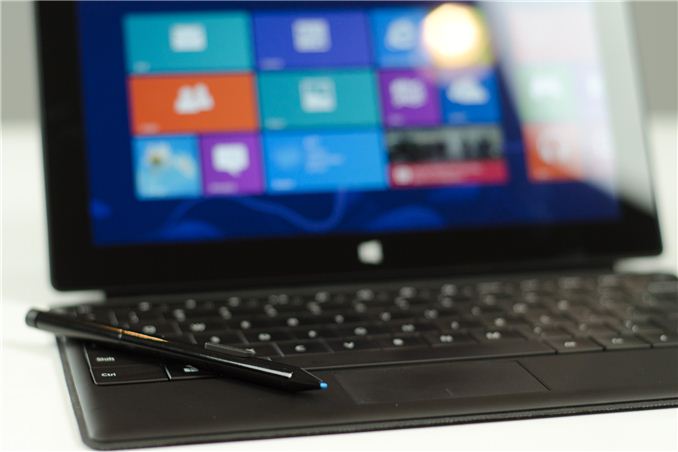
While we're still waiting for Windows RT and iOS versions of the latest 3DMark, there is one cross-platform comparison we can make: Ivy Bridge/Clover Trail to the Android devices we just tested in 3DMark.
The same caveats exist under 3DMark that we mentioned in our GL/DXBenchmark coverage: not only is this a cross-OS comparison, but we're also looking across APIs as well (OpenGL ES 2.0 for Android vs. Direct3D FL 9_1 for Windows). There will be differences in driver maturity not to mention just how well optimized each OS is for the hardware its running on. There are literally decades of experience in optimizing x86 hardware for Windows, compared to the past few years of evolution on the Android side of the fence.
Absent from these charts is anything running on iOS. We're still waiting for a version of 3DMark for iOS unfortunately. If our previous results are any indication however, Qualcomm's Adreno 320 seems to be hot on the heels of the GPU performance of the 4th generation iPad:
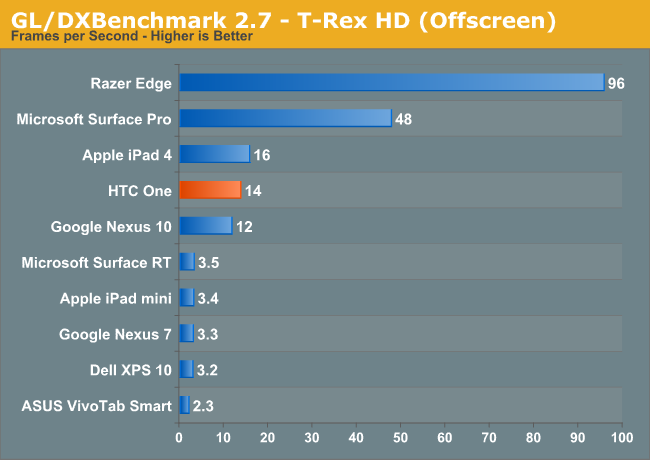
In our GL/DXBenchmark comparison we noted Microsoft's Surface Pro (Intel HD 4000 graphics) managed to deliver 3x the performance of the 4th generation iPad. Will 3DMark agree?
All of these tests are run at the default 720p settings. The key comparisons to focus on are Surface Pro (Intel HD 4000), VivoTab Smart (Intel Clover Trail/SGX 545) and the HTC One (Snapdragon 600/Adreno 330). I've borrowed the test descriptions from this morning's article.
Graphics Test 1
Ice Storm Graphics test 1 stresses the hardware’s ability to process lots of vertices while keeping the pixel load relatively light. Hardware on this level may have dedicated capacity for separate vertex and pixel processing. Stressing both capacities individually reveals the hardware’s limitations in both aspects.
In an average frame, 530,000 vertices are processed leading to 180,000 triangles rasterized either to the shadow map or to the screen. At the same time, 4.7 million pixels are processed per frame.
Pixel load is kept low by excluding expensive post processing steps, and by not rendering particle effects.
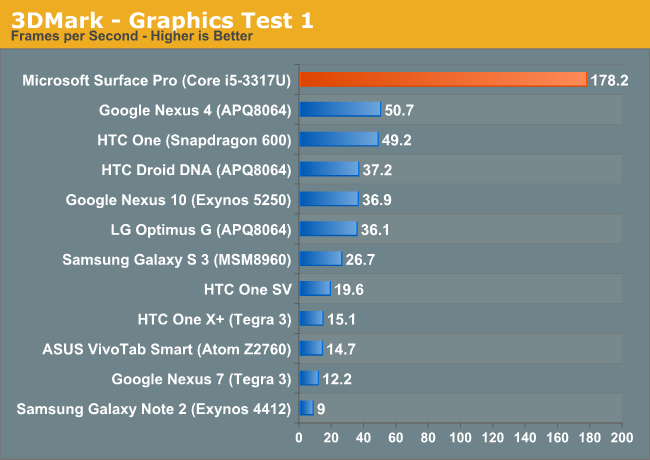
In this mostly geometry bound test, Surface Pro does extremely well. As we saw in our GL/DXBenchmark comparison however, the ARM based Android platforms don't seem to deliver the most competitive triangle throughput.
Graphics Test 2
Graphics test 2 stresses the hardware’s ability to process lots of pixels. It tests the ability to read textures, do per pixel computations and write to render targets.
On average, 12.6 million pixels are processed per frame. The additional pixel processing compared to Graphics test 1 comes from including particles and post processing effects such as bloom, streaks and motion blur.
In each frame, an average 75,000 vertices are processed. This number is considerably lower than in Graphics test 1 because shadows are not drawn and the processed geometry has a lower number of polygons.
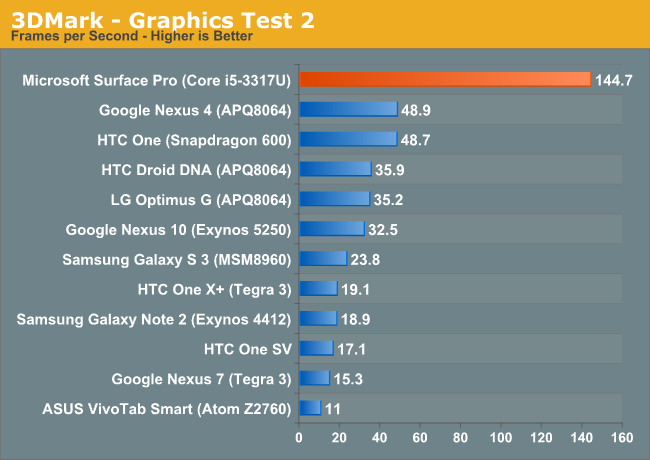
The more pixel shader bound test seems to agree with what we've seen already: Intel's HD 4000 appears to deliver around 3x the performance of the fastest ultra mobile GPUs, obviously at higher power consumption. In the PC space a 3x gap would seem huge, but taking power consumption into account it doesn't seem all that big of a gap here.
Physics Test
The purpose of the Physics test is to benchmark the hardware’s ability to do gameplay physics simulations on CPU. The GPU load is kept as low as possible to ensure that only the CPU’s capabilities are stressed.
The test has four simulated worlds. Each world has two soft bodies and two rigid bodies colliding with each other. One thread per available logical CPU core is used to run simulations. All physics are computed on the CPU with soft body vertex data updated to the GPU each frame. The background is drawn as a static image for the least possible GPU load.
The Physics test uses the Bullet Open Source Physics Library.
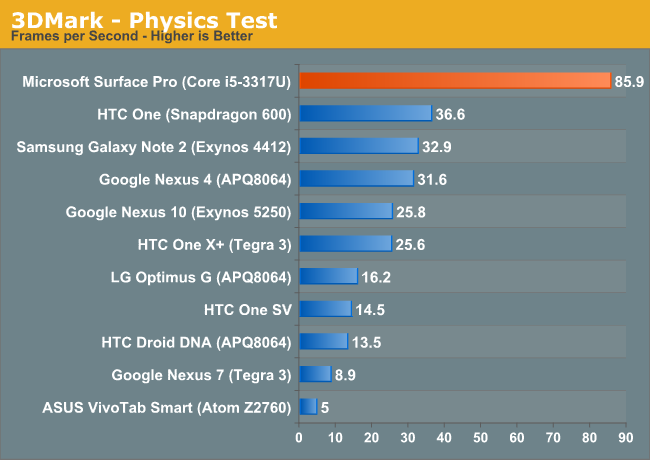
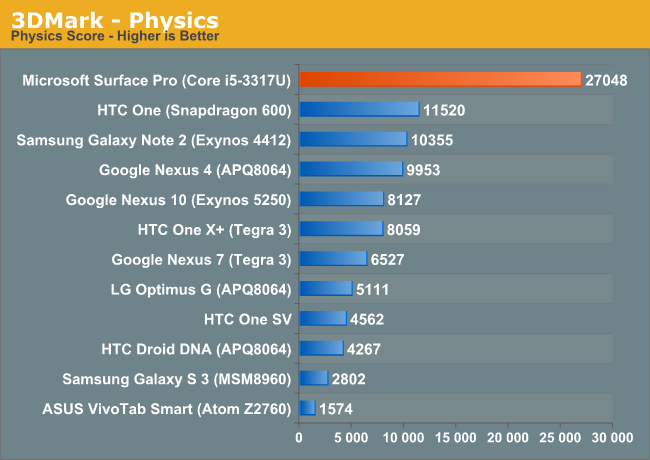
Surprisingly enough, the CPU bound physics test has Surface Pro delivering 2.3x the performance of the Snapdragon 600 based HTC One. Quad-core Cortex A15 based SoCs will likely eat into this gap considerably. What will be most interesting is to see how the ARM and x86 platforms converge when they are faced with similar power/thermal constraints.
What was particularly surprising to me is just how poorly Intel's Atom Z2560 (Clover Trail) does in this test. Granted the physics benchmark is very thread heavy, but the fact that four Cortex A9s can handily outperform two 32nm Atom cores is pretty impressive. Intel hopes to fix this with its first out-of-order Atom later this year, but that chip will also have to contend with Cortex A15 based competitors.
Ice Storm - Overall Score
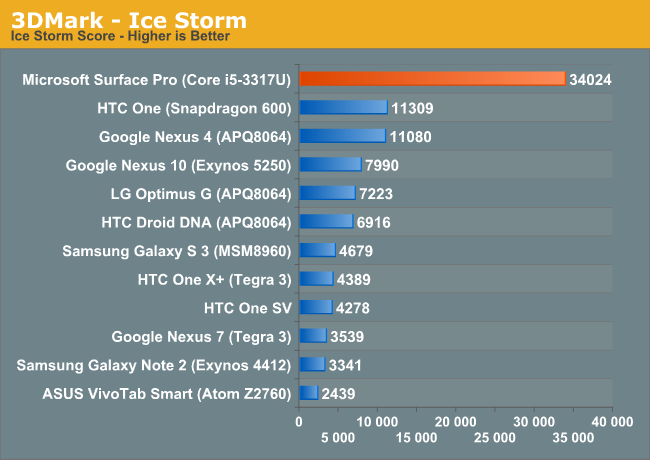
The overall score seems to agree with what we learned from the GL/DXBenchmark comparison. Intel's HD 4000 delivers around 3x the graphics performance of the leading ultra mobile GPUs, while consuming far more power. Haswell will drive platform power down, but active power should still be appreciably higher than the ARM based competition. I've heard rumblings of sub-10W TDP (not SDP) Haswell parts, so we may see Intel move down the power curve a bit more aggressively than I've been expecting publicly. The move to 14nm, and particularly the shift to Skylake in 2015 will bring about true convergence between the Ultrabook and 10-inch tablet markets. Long term I wonder if the 10-inch tablet market won't go away completely, morphing into a hybird market (think Surface Pro-style devices) with 7 - 8 inch tablets taking over.
It's almost not worth it to talk about Clover Trail here. The platform is just bad when it comes to graphics performance. You'll notice I used ASUS' VivoTab Smart here and in the GL/DXBenchmark comparison instead of Acer's W510. That's not just because of preference. I couldn't get the W510 to reliably complete GL/DXBenchmark without its graphics driver crashing. It's very obvious to me that Intel didn't spend a lot of time focusing on 3D performance or driver stability with Clover Trail. It's disappointing that even in 2012/2013 there are parts of Intel that still don't take GPU performance seriously.
The next-generation 22nm Intel Atom SoC will integrate Intel's gen graphics core (same architecture as HD 4000, but with fewer EUs). The move to Intel's own graphics core should significantly modernize Atom performance. The real question is how power efficient it will be compared to the best from Imagination Tech and Qualcomm.


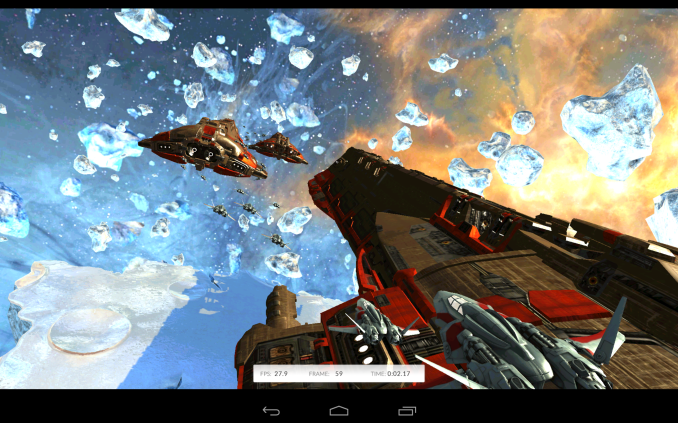

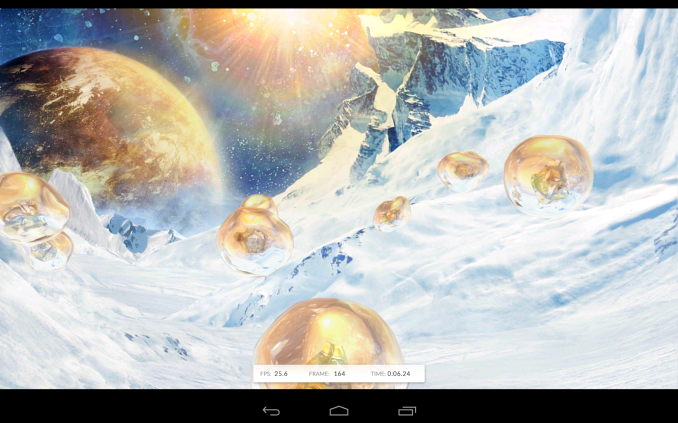








56 Comments
View All Comments
ssj4Gogeta - Tuesday, April 2, 2013 - link
I agree. You'd still have to deal with the heat, but once you have a lot of power, you can find ways to dissipate heat too.Zan Lynx - Tuesday, April 2, 2013 - link
If battery tech "kept up" then it'd be illegal to carry your devices on airplanes. And probably most places in public.Unless an energy storage device has some rate limit on output, it is equivalent to a bomb. Fuel cells can be pretty easily hacked to explode. A superconducting loop storage could dump all its energy at one time like a lightning bolt. The effects of an energy storage flywheel failure are really spectacular.
whyso - Tuesday, April 2, 2013 - link
Legally, manufacturers cannot sell a laptop with a battery over about 100 watt hours. Thats why the ultralong battery life notebookts (with the slice battery) have two smaller batteries.iuqiddis - Tuesday, April 2, 2013 - link
Is it possible to put up a comparison with a current generation desktop PC platform? Maybe a i7-3770 series or even an AMD APU. I know it's an apples to watermelons kind of comparison, but it would be fascinating to see where today's mobile offerings stand compared to old school desktops.takeship - Tuesday, April 2, 2013 - link
I can give my results at least, run this afternoon.Smartphone is a Tmob Sensation 4G (Dual core Snapdragon S3, with Adreno 225 graphics)
Test 1: 24 fps
Test 2: 21 fps
Physics: 4.5 fps
I'm running Android Revolution HD 7.1, so a bit better than what a stock HTC rom will give you.
Desktop is a i7 3770 on ROG Gene V board with Direct CUII Radeon HD 7970
Test 1: ~1540 fps
Test 2: ~1450 fps
Physics: ~140 fps
So, summation: a top end modern GPU & CPU is roughly 64x the performance of last year's ARM v7.
WagonWheelsRX8 - Wednesday, April 3, 2013 - link
Precisely what I was also curious about! With all of the focus on the march of progress of these SoC's and the availability of a cross-platform benchmark I wanted to know what the delta was...its still a big one, thanks for the post!bengildenstein - Tuesday, April 2, 2013 - link
"In an average frame, 530,000 vertices are processed leading to 180,000 triangles rasterized either to the shadow map or to the screen."I don't think this is correct. Each vertex in a strip (which then make up objects) imply a whole new triangle, so an example object with 530K verticies would have 530K - 2 triangles. I don't think a simple divide by 3 would yield the correct number of triangles rasterized for a scene like this. It would likely have far more triangles; probably very close to the number of total transformed vertices.
Look up "Triangle Strip" or "Triangle Fan" on wikipedia for more info. Corrections welcomed.
3dcgi - Tuesday, April 2, 2013 - link
Triangle lists are used more often than strips and even if a strip is used it will be a bunch of strips not one giant strip. That said, the number is still weird as it implies there's no vertex reuse.bengildenstein - Wednesday, April 3, 2013 - link
Thanks for the added insight!piroroadkill - Tuesday, April 2, 2013 - link
Good idea.When you said "old school desktops" that made me think of actual old desktops.
I'd love to see what old desktop configuration comes closest to some of these devices.
Athlon XP with a Radeon 9700? Who knows!